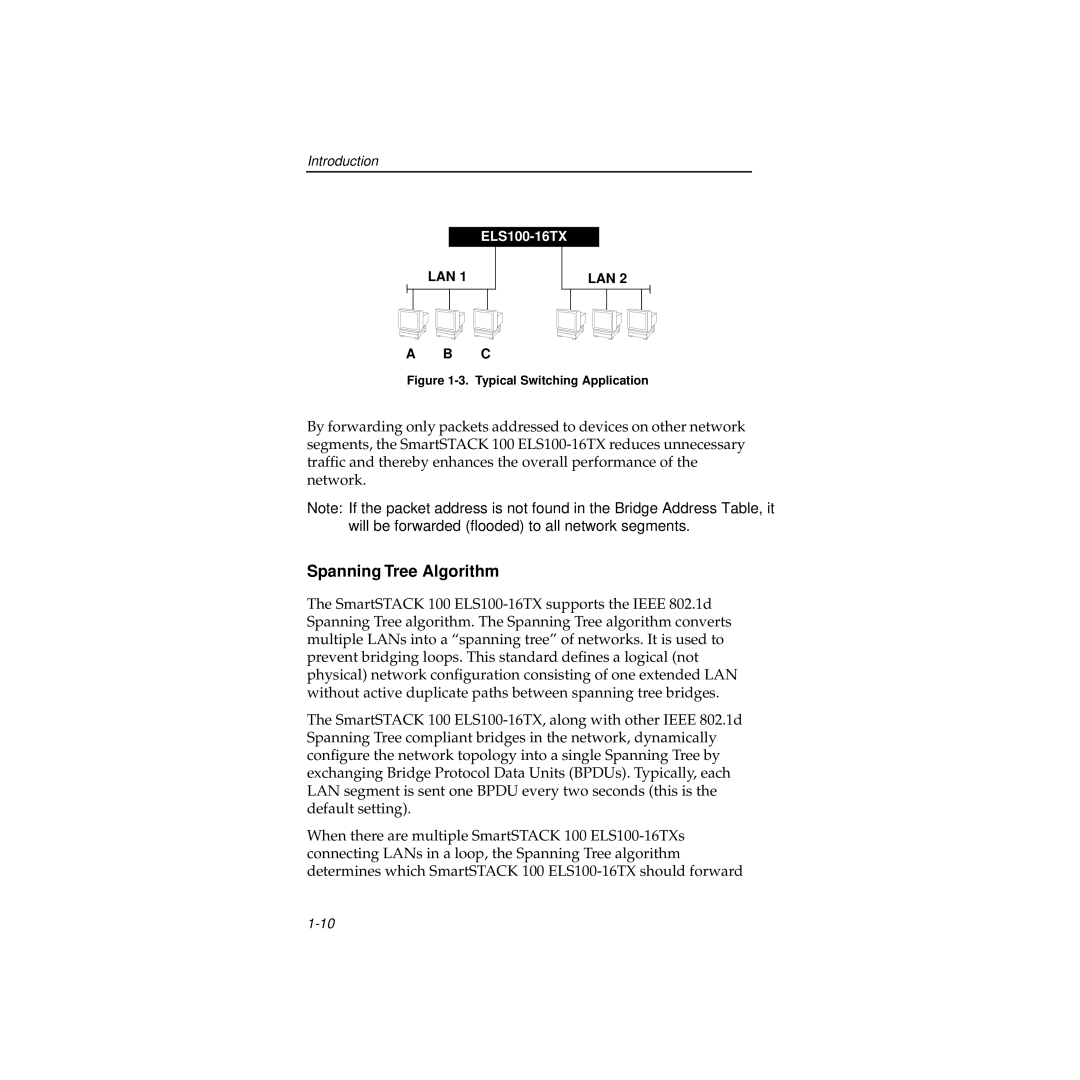Introduction
FastNetELS10010-16TX
A B C
Figure 1-3. Typical Switching Application
By forwarding only packets addressed to devices on other network segments, the SmartSTACK 100 ELS100-16TX reduces unnecessary traffic and thereby enhances the overall performance of the network.
Note: If the packet address is not found in the Bridge Address Table, it will be forwarded (flooded) to all network segments.
Spanning Tree Algorithm
The SmartSTACK 100 ELS100-16TX supports the IEEE 802.1d Spanning Tree algorithm. The Spanning Tree algorithm converts multiple LANs into a “spanning tree” of networks. It is used to prevent bridging loops. This standard defines a logical (not physical) network configuration consisting of one extended LAN without active duplicate paths between spanning tree bridges.
The SmartSTACK 100 ELS100-16TX, along with other IEEE 802.1d Spanning Tree compliant bridges in the network, dynamically configure the network topology into a single Spanning Tree by exchanging Bridge Protocol Data Units (BPDUs). Typically, each LAN segment is sent one BPDU every two seconds (this is the default setting).
When there are multiple SmartSTACK 100 ELS100-16TXs connecting LANs in a loop, the Spanning Tree algorithm determines which SmartSTACK 100 ELS100-16TX should forward

